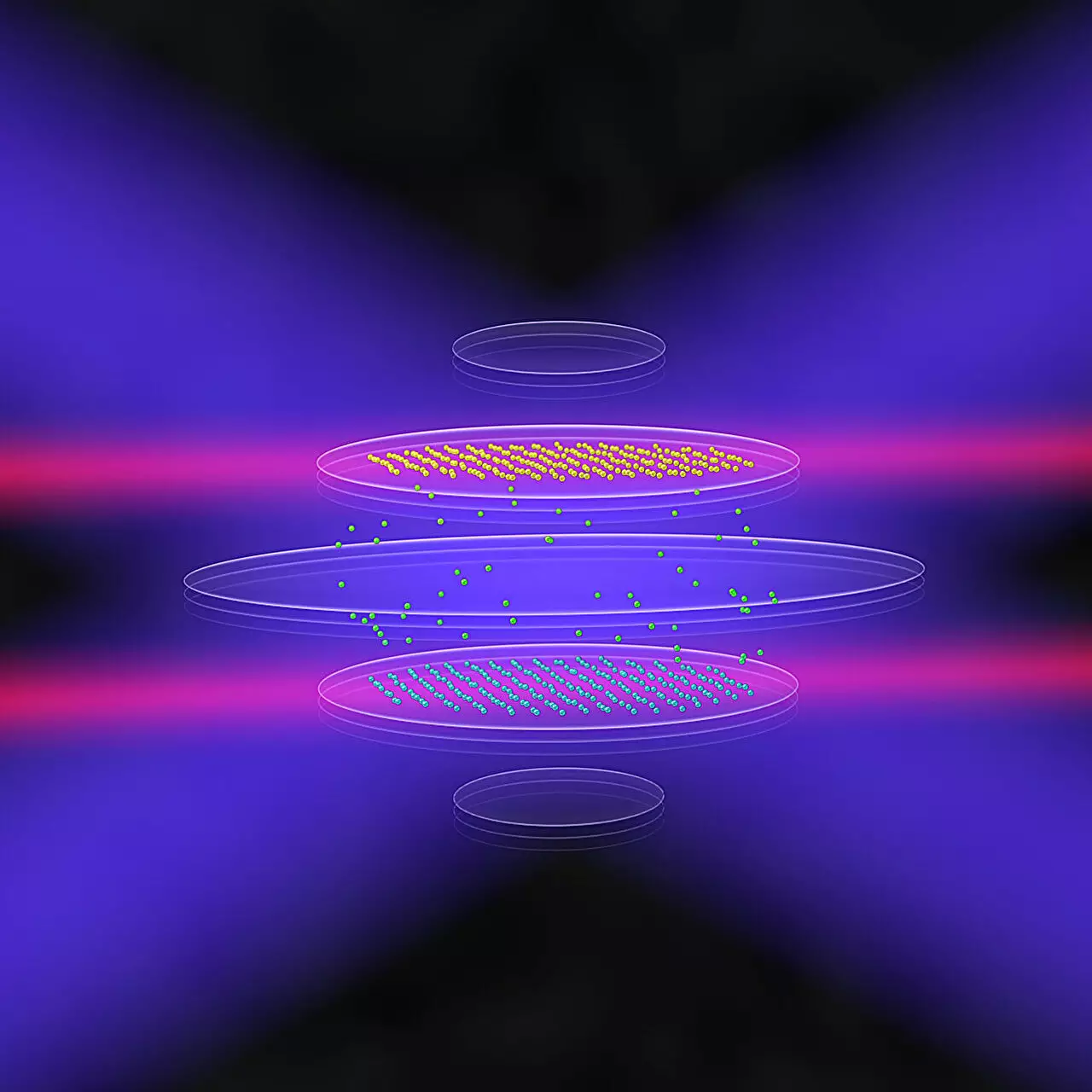Quantum devices, which range from advanced sensors to high-performance quantum computers, are increasingly reliant on trapped ions—charged atoms harnessed through electric and magnetic forces. While tremendous progress has been made in utilizing these systems, significant barriers remain, particularly when it comes to scaling the technology and enhancing its functionality. Traditionally, scientists have operated within the constraints of one-dimensional chains or two-dimensional planes composed of these trapped ions, stifling deeper exploration into the realm of quantum mechanics and the potential it holds.
The Quest for Three-Dimensional Quantum Structures
The dream of achieving three-dimensional configurations of trapped ions has long captivated researchers. Creating such complex arrangements is no simple feat; the fundamental challenge lies in maintaining stability and control while positioning ions in a non-linear fashion. However, a groundbreaking collaboration among physicists from India, Austria, and the United States—featuring prominent figures such as Ana Maria Rey from JILA and NIST—may be the key to unlocking the next frontier in quantum technology. The researchers, whose work was published in Physical Review X, advocate for a novel approach to ion trapping that involves recalibrating the electric fields employed in existing systems.
This innovative technique proposes the manipulation of electric fields to foster stable, multilayered arrangements of ions, paving the way for previously unimaginable advancements in quantum computing and information science. Rey noted that the ability to trap significant groups of ions across multiple spatial layers could catalyze studies into complex phenomena like topological chiral modes, teleportation, and spatially-varying field measurements—elements crucial for the ongoing evolution of quantum information science.
Among the various systems examined for quantum computation, trapped ions have emerged as frontrunners due to their remarkable controllability and precision in executing quantum operations. By manipulating the state of these ions with laser and microwave pulses, researchers can imbue them with coded information, transforming them into operational quantum bits or “qubits.” This method offers considerable advantages, as the ions also experience the Coulomb force—permitting entanglement that enhances measurement precision while mitigating overall system noise.
Earlier investigations have successfully illustrated the capacity for ion crystals to adopt three-dimensional forms, yet the researchers behind this latest study focused on advancing the concept further by exploring the aggregation of ions into bilayer crystals—two stacks of ions layered vertically. Samarth Hawaldar, the chief author of the research from the Indian Institute of Science, emphasized the pursuit of more sophisticated structures based on the Penning trap system, a type of ion trap adept at securely enlisting numerous ions.
The Penning trap tantalizes scientists with its ability to secure extensive collections of ions; it keeps them in place through a delicate equilibrium of electromagnetic forces. By rotating the ions under a powerful magnetic field, researchers can effectively use the Coulomb interactions—the natural repulsive force between charged ions—to induce them into crystalline formations. Historically, these ions have predominantly arranged themselves into simpler, rounded shapes due to the limitations of the confinement potential.
In their unique approach, the researchers altered the electric fields within the Penning trap to generate more complex confinement environments, enabling the coaxing of ions into bilayer structures. This theoretical advancement rests on extensive numerical simulations validating that specific configurations of ion layers can remain stable. Furthermore, these insights suggest the possibility of developing multilayer crystallizations beyond just two levels in future experiments.
The implications of shifting from two-dimensional to three-dimensional ion trapping are profound for advancing quantum technologies, encompassing both sensors and quantum computers. Dr. Athreya Shankar, a postdoctoral researcher at the Indian Institute of Science, expressed enthusiasm for the enhanced capabilities offered by bilayer crystals, particularly in facilitating the creation of quantum entanglement across spatially separated subsystems—an essential characteristic for efficient quantum computing mechanisms.
With the excitement surrounding these theoretical advances, researchers are eager to transition their findings into experimental setups within their existing Penning traps. If these experimental trials succeed, they could usher in a new era of quantum hardware architectures that better leverage three-dimensional configurations, boosting efficiency and robustness.
Moreover, the potential for applications extends beyond hardware utility; bilayer crystals could significantly enhance quantum simulations and sensing capabilities. As Rey elaborated, the distinct modes of ions within a bilayer structure could prioritize interactions in ways favorable for exploring behaviors similar to those of electrons in powerful magnetic fields, all while ensuring precise control.
The ongoing collaboration between researchers from India, Austria, and the United States symbolizes a crucial alliance in propelling quantum technology to unprecedented heights. The ingenuity found in studies revealing the potential of three-dimensional ion structures not only captures the imagination but also lays groundwork for transformative breakthroughs in quantum computing, sensing, and various other fields. With a commitment to experimentation and exploration, this collaborative research promises to illuminate the vast potentials of quantum technology, inviting deeper inquiry into a frontier still rich with possibilities.


Leave a Reply